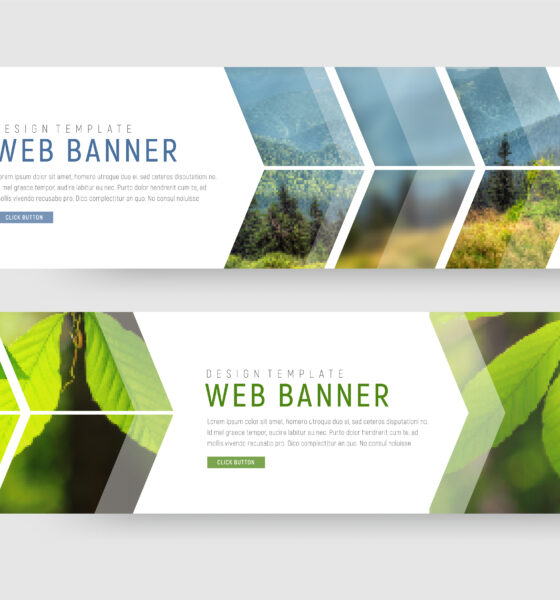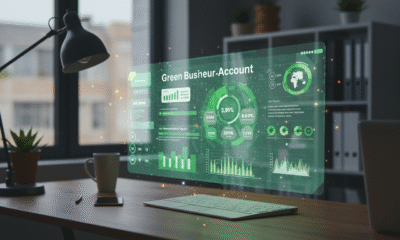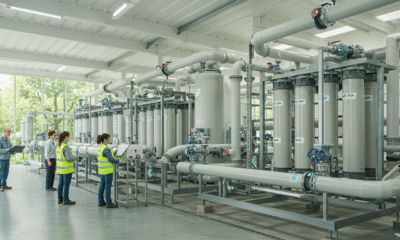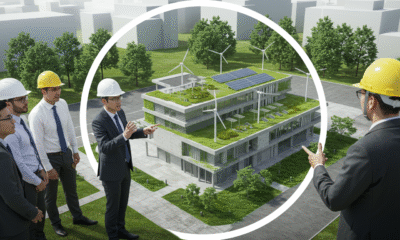

Environment
How Can I Make My Website More Eco-Friendly?
Eco-friendly business practices are becoming a lot more important these days. Many businesses are investing in SEO to cut the carbon footprint of their marketing strategies. However, it is even more important to have an eco-friendly website.
It is becoming more important to consider the environment in decisions in our personal and business lives. For example, if you run a website, you may be wondering whether there is anything that you can do to reduce the environmental impact that your site has. You’ll be glad to know that there are lots of things that you can do to make your website more eco-friendly.
What is an Eco-Friendly Website?
Your website exists in a virtual world, so how can it contribute to carbon emissions? Websites do contribute to carbon emissions worldwide. The devices used to access the internet and store servers’ facilities are significant contributors to global carbon emissions.
Eco-friendly websites strive to reduce their negative impact on the environment through one or both of these areas.
Why is Building an Eco-Friendly Website Important?
- Do your part for the environment.
- Market your business as eco-friendly and generate positive sentiment towards your company as a result
- Improve your bottom line by decreasing energy expenses
Creating an eco-friendly website can do a lot to help make your business more sustainable.
How to Make a Website More Eco-Friendly
Choose Renewable Energy Sources
Does your business rely on computers? If so, powering those computers with renewable energy is a great way to make your website eco-friendly.
Whether you only have a couple of people writing or programming for your website, or you have a whole team maintaining it, using renewable energy to power those computers can make all the difference. Have your team working in an office? Using renewable energy to power the office space is a great idea.
Reduce the Energy That Your Computers Consume
Reducing the amount of energy that computers consume with simple tricks like lowering screen brightness or using smaller machines can help. In addition, encourage employees to turn computers off when they’re not in use.
Tracking how much energy computers are consuming and using this as a motivating factor for your employees is a great way to make them feel more natural.
Choose an Environmentally Friendly Web Host
Chances are, the server that hosts your website is not in your building. You are probably using a company with many servers to keep your website online and working quickly.
While the building that houses your server is probably far away and not very present in your thought process, it nonetheless has an important impact on environmental carbon emissions. Therefore, choosing eco-friendly hosting is an excellent way to reduce the effect running those servers has on the environment.
Build an Uncomplicated Website
Sometimes it seems that we are in a constant race to make the most complex and advanced websites possible. However, more extensive and more complicated isn’t always better.
The more complex your site, the more energy it takes to load it. Coding, graphics, media, etc. all consume power to load. Sites with lots of elements load more slowly and make more frequent server requests to load. An uncomplicated website has another advantage: it will load faster and may end up being more user-friendly.
If a page loads slowly you need to check its size. One of the SEO platform’s Sitechecker tools will allow you to determine the size of a page in kilobytes and provide you a detailed list of tips for optimizing it.
Make Your Content Print Friendly
In general, it’s best for the environment not to print content at all. Unfortunately, however, there’s not much you can do to prevent people from printing the content on your site.
What you can do is check that only what is needed is printed. When people print content from your site, you want to ensure that they get what they need the first time. That way, they don’t end up reprinting to get the graphics and text right. It’s also essential to ensure that lots of extra content that’s not needed isn’t being printed.
Optimize Images
Your big, high-resolution images may look great on a large computer screen when someone pulls up your site. However, they have a high cost when it comes to the environmental impact on your website. Images like these require a lot of energy to load and slow down your website’s load time.
Furthermore, since so many people search the web on their smartphones, high-resolution images may not be nearly as important as you think. Consider reducing the size of your images, so your website uses less energy.
It’s Not Hard to Make Your Website Eco-Friendly
Building an eco-friendly website may be easier than you expected. Simple steps like choosing a green host, making your site more straightforward and faster, and reducing office energy consumption can all make a big difference. Whether you are trying to save money, improve your customers’ impression of your business, or reduce your negative impact on the environment, building an eco-friendly website is a perfect solution.
































